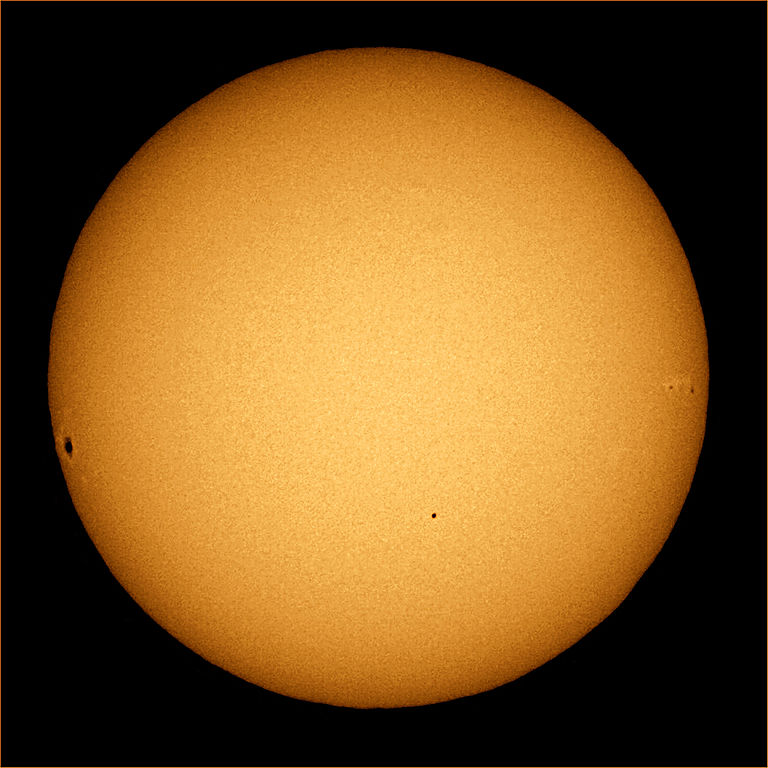 |
| Transit of Mercury in 2006. The larger black spots to either side are solar storms. Mercury is the small dot near the center. Image Credit |
| Mercury's path across the Sun. Image Credit |
If you want to double check the timing of the transit from your area, timeanddate.com is very helpful in breaking down the timing of transits and eclipses. You can put in your location to get a custom listing.
| Mercury Transit from 2006. Image by Phillip Jones. |
The planetarium staff will be busy with school kids on Monday morning, but we hope to step out to watch parts of the transit. We will plan to be observing with solar scopes on the Sun Plaza from at least Noon-1 PM, weather permitting, so stop on by!
You can learn more about what's happening in the sky and the latest news from space at the Dome Planetarium at the Peoria Riverfront Museum. Follow us on Facebook and Twitter for daily updates!
No comments:
Post a Comment